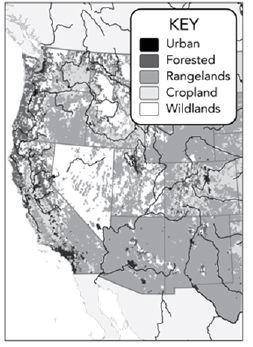
Today, only about 25% of the Earth is still in its natural, unaltered state. The rest of the terrestrial biosphere consists of human-altered biomes, called anthropogenic biomes or anthromes. The map shows the five main anthromes in the western United States.
Civil engineers have proposed incorporating greenspaces in urban areas and rooftop gardens on all new and existing buildings in residential areas to encourage growth of native species and restore some of the ecosystem services provided by the original ecosystem in the area. Which statements best describe the direct benefits of adding greenspaces and rooftop gardens in terms of reducing the negative impact of urbanization?
a
Overall biodiversity in the urban area will likely improve.
b
Human population growth will likely be reduced exponentially.
c
Runoff into nearby surface waters will likely decrease.
d
Increased photosynthesis will reduce carbon movement into the atmosphere.


Answers: 1
Other questions on the subject: Biology

Biology, 22.06.2019 03:20, ahmedeldyame
Which of the following statements most accurately describes convergent evolution? the process in which two similar species evolve separately from each other and share similar characteristics the process in which a single species evolves into two or more new species the process in which two entirely different species evolve in response to each other the process in which two different species evolve separately from each other but still share similar characteristics
Answers: 3

Biology, 22.06.2019 05:00, jxcxhxwxll
The chemical form of energy that is useable by the cell to do work
Answers: 2

Biology, 22.06.2019 11:20, sipstick971
Scientific evidence is most likely to be consistent if it is based on data from
Answers: 2

Do you know the correct answer?
Today, only about 25% of the Earth is still in its natural, unaltered state. The rest of the terrest...
Questions in other subjects:


History, 13.07.2019 11:00


History, 13.07.2019 11:00





Mathematics, 13.07.2019 11:00

History, 13.07.2019 11:00






